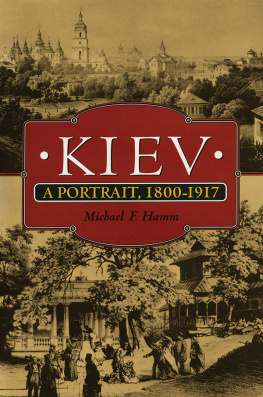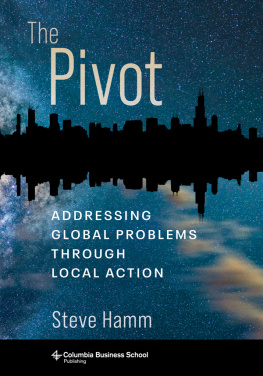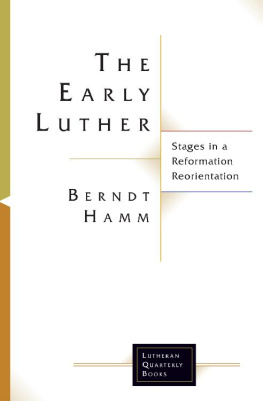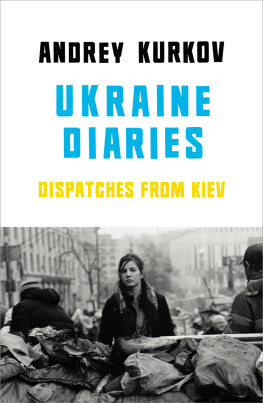
KIEV
A PORTRAIT,
1800-1917

A PORTRAIT, 1800-1917
Michael F. Hamm
PRINCETON UNIVERSITY PRESS
PRINCETON, NEW JERSEY
Copyright 1993 by Princeton University Press
Published by Princeton University Press, 41 William Street, Princeton, New Jersey 08540
In the United Kingdom: Princeton University Press, Chichester, West Sussex
All Rights Reserved
Library of Congress Cataloging-in-Publication Data
Hamm, Michael F.
Kiev: a portrait, 18001917 / Michael F. Hamm
p. cm.
Includes bibliographical references and index.
ISBN 0-691-03253-X
ISBN 0-691-02585-1 (pbk.)
1. Kiev (Ukraine)History.
DK503.935.H36 1993
947.715dc20 93-16290 CIP
This book has been composed in Sabon Typeface
Princeton University Press books are printed on acid-free paper and meet the guidelines for permanence and durability of the Committee on Production Guidelines for Book Longevity of the Council on Library Resources
Fourth printing, and first paperback printing, with new preface, 1995
Printed in the United States of America
5 7 9 10 8 6 4
 FOR
FOR 
JoAnn, Sarah, and Jill

ILLUSTRATIONS
TABLES

S INCE Kiev: A Portrait, 18001917 first appeared in 1993, Ukrainians have suffered horrendous inflation, steep declines in industrial and agricultural production, and a deteriorating standard of living. Responding with apathy, many Kievans refused to vote in the November 1994 elections, rendering the results invalid in sixteen of eighteen voting districts. Political gridlock between the president and parliament has stalled efforts at economic reform, and the state sector still accounts for sixty percent of Ukraines production. However, in recent months Leonid Kuchma has strengthened the powers of the presidency, brought down inflation, and increased real wages. Ukraines future as a stable, independent country looks promising at this point, but Kuchma warns that at least another year or two will be required for Ukraine to recover from its economic crisis.
The paperback edition of Kiev: A Portrait contains only a few changes and corrections from the 1993 edition. I wish to thank Lady Alexandra F. Harris of Oxford, England, a descendant of Mark Brodsky, for material from her family archive enabling the changes found on pages 122, 153, and 170.
Michael F. Hamm
Centre College
Danville, Kentucky
September 1995

T HE RULING CENTER of Kievan Rus, the largest political entity in medieval Europe, and the early stronghold of Eastern Slavic Christianity, Kiev has long held a special place in Ukrainian and Russian history. Destroyed by the Mongols in 1240, and sacked again in 1416 and 1482, Kiev fell under Lithuanian, Polish, and ultimately Muscovite Russian rule. Although it retained some importance as a religious, educational, and trade center, it did not recover the size or significance it had enjoyed as the capital of Kievan Rus for many centuries, and, in fact, did not regain its thirteenth-century population of fifty thousand or more until the middle of the nineteenth century. In 1800 one visitor described Kiev as little more than three barely connected, village-like settlements: Podil, Pechersk, and High City. Kiev, he asserted, could barely be called a city at all.
At the beginning of the nineteenth century, Kiev had a continuous population of about twenty thousand people. By 18691870, when the railroad connecting the city with Moscow and the Black Sea port of Odessa was completed, Kievs population had grown to seventy thousand. By 1914 it had become a major metropolis with more than six hundred thousand inhabitants. Kiev: A Portrait, 18001917 is the story of the citys transformation and renascence during these decades of exceptional growth.
In exploring the changing world of late-imperial Kiev, I have been as comprehensive as my sources permit. My examination of the citys political culture, for example, includes discussions of burgher attempts to defend the autonomy provided them in medieval times by the Magdeburg Rights; the policies and priorities of the propertied elite empowered by the tsars to manage municipal growth and development after 1870; the rise of the citys socialist movement; and the upheavals of 1905, which shook the foundation of the imperial order. I devote considerable attention to the ethnic and ethnoreligious composition of the city and the extent to which various ethnic groups helped shape its character. Although most Kievans came from the Ukrainian lands that bordered Kiev Province, Kiev became an important center of Russian culture and authority. During the nineteenth century, in fact, it came to be thought of as a Russian city. However, Poles contributed mightily to its culture and economic life, and Polish national goals were a prominent concern of Kiev authorities, at least until the insurrection of 1863. After long periods of exclusion, Jews reestablished a sizable community in the city under Alexander II. The resulting tensions quickly came to overshadow all other ethnic issues during the remaining decades of Romanov rule, and brutal pogroms decimated the Jewish community in 1881 and 1905.
The tensions and conflicts found in Kiev existed in other cities too, but in some ways Kiev was distinctive. The Ukrainian cities of Odessa and Kharkiv, for example, were also Russified in the nineteenth century, but Poles contributed less significantly to the cultures of these cities, and Polish national objectives remained peripheral to their politics. Odessa had a large Jewish population and a history of pogroms, but unlike Kiev was located within the Pale of Settlement. Odessas Jews did not face the nighttime roundups and expulsions that made late-imperial Kiev notorious.
I have tried to capture the color and flavor of everyday life in Kiev. I depict changes in the citys main neighborhoodsPodil, Khreshchatyk, Shuliavka, and others; profile some of the personalities who dominated its political, cultural, or economic lifethe one-armed Governor-General Dmitry Bibikov and the wealthy Jewish entrepreneur Lazar Brodsky, for example; and describe a variety of its subcultures, including the raucous university students who were frequently targets of Bibikovs wrath, the Ukrainian day laborers and servants who congregated in its bazaars in search of work, the so-called vagabond artel that hauled freight to and from its port, and the anonymous ghetto Jews who hoped to find opportunity among its inhabitants, many of whom disliked or resented them. What it was like to live in Kiev, how Kievans amused and entertained themselves, and the diversions the city provided are among the topics addressed in this book.
Central to the historians craft is the ability to tell a story.
Next page













 FOR
FOR 

